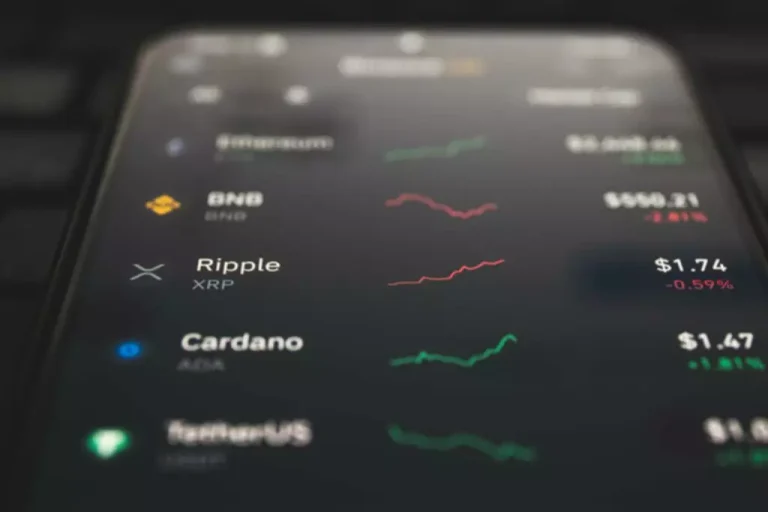Content
These underlying elements can range from commodities and stocks to interest rates and currencies. Derivative transactions often involve commitments to make payments or buy or sell securities at future dates, which can range from a few weeks to several years. This future-oriented nature causes the value of a derivative to fluctuate over time, in tandem with the changes in the underlying assets or indices. etd meaning The common types of exchange traded derivatives include futures contracts, options contracts, and swaps contracts. These contracts can be used to trade any number of assets and come with their own risks. Prices for derivatives derive from fluctuations in the prices of underlying assets.

Types of Exchange Traded Derivatives
Since these contracts are complex instruments with multiple inputs, they must be precisely calculated to determine the correct market price. By making it easier for people to enter and exit positions, derivatives help create a much more liquid market. It ultimately leads to lower transaction costs and better pricing power for traders. Derivatives can improve market efficiency by Mining pool allowing traders and investors to identify and take advantage of market opportunities effortlessly. It can lead to increased market activity and more efficient allocation of resources.
What is your current financial priority?
Additionally, they can be utilized to access a certain object without actually owning it. Swaps are considered more complex than other derivatives, such as options and futures, but can provide greater flexibility and better pricing. A “swap,” or financial derivative, involves the regular exchange of cash flows between two parties. A futures derivative is https://www.xcritical.com/ a financial instrument that is derived from a futures contract.
What Are the Main Benefits and Risks of Derivatives?
A default happens when one party does not have the required capital to fulfill their obligations, which can result in a loss for the other party. The asset classes that can be used in derivatives expanded to include stocks, bonds, currencies, commodities, and real estate. Therefore, in order to trade in the derivatives market, you need to develop efficient risk management strategies.
Derivatives: Types, Advantages, Disadvantages, How to trade Derivatives
If the put option cost the investor $200 to purchase, then they have only lost the cost of the option because the strike price was equal to the price of the stock when they originally bought the put. A strategy like this is called a protective put because it hedges the stock’s downside risk. In terms of timing your right to buy or sell, it depends on the “style” of the option. An American option allows holders to exercise the option rights at any time before and including the day of expiration. Most stocks and exchange-tradedfunds have American-style options while equity indexes, includingthe S&P 500,have European-style options.
The main drawbacks of derivatives include counterparty risk, the inherent risks of leverage, and the fact that complicated webs of derivative contracts can lead to systemic risks. A derivative is a contract or product that derives its value from an underlying asset. Derivatives can include a wide range of such assets including indices, currencies, exchange rates, commodities, stocks, or the rate of interest. The buyer and seller of such contracts have opposite estimations of the future trading price. Both the parties bet on the future value of the underlying assets to make a profit.
These derivatives are typically used by both institutional and individual investors to hedge their exposure to interest rate movements. They can also be employed as a speculative tool to profit on prospective interest rate changes. Index derivatives are financial contracts that are based on an index’s performance. They give investors exposure to the performance of a basket of securities without having to own all the underlying assets. These derivatives are based on the changes in the level of a particular index and can be used to hedge against losses in the underlying index. Equity derivatives include futures and options, which can be used by investors to speculate on the direction of the underlying asset or hedge against losses when prices fall.

OTC-traded derivatives generally have a greater possibility of counterparty risk, which is the danger that one of the parties involved in the transaction might default. To hedge this risk, the investor could purchase a currency derivative to lock in a specific exchange rate. Derivatives that could be used to hedge this kind of risk include currency futures and currency swaps. OTC-traded derivatives generally carry a greater counterparty risk – the danger that one of the parties involved in the transaction might not deliver on its obligations, or default.
It is a sort of derivative security, which means that the value of its underlying asset—in this example, a futures contract—is what determines the value of the derivative security. OTC markets have two dimensions to it, namely customer market and interdealer market. In customer market, bilateral trading happens between the dealers and customers. This is done through electronic messages which are called dealer-runs providing the prices for buying and selling the derivatives.
- Retail investors might take a position in stock options to hedge the value of their stock portfolios.
- At the core of exchange-traded derivatives is the principle of standardization.
- Derivatives can take many forms, from stock and bond derivatives to economic indicator derivatives.
- Banks might hedge the value of their treasuries portfolio by taking an opposite position in treasury futures.
- Derivative instruments are mainly used for hedging the risk or earning profit through speculation on value of underlying security.
- It can attract greater FPI interest, potentially increasing trading volumes and market efficiency.
One example that comes to me is a farmer selling cattle futures now to reduce price uncertainty when her herd is ultimately ready to be sold. Another example would be a bond issuer who uses interest rate swaps to convert their future bond interest obligation in order to better match their projected future cashflows. Trading in the derivatives markets has reduced transaction costs as compared to traditional assets as shares or bonds. Lower transaction costs are made possible by derivatives because they effectively act as a risk management tool.

Therefore, losses in underlying commodities may be offset by profit in contracts of derivatives. In Exchange traded derivatives, stocks are the most common underlying asset that is traded. Using both types of derivatives, traders take leveraged positions on the stock price movements.The Bombay Stock Exchange and National Stock Exchange exclusively deal in stock derivatives in India. However, stock derivatives are prime derivatives that can direct the future movement of stocks.
At the beginning of the swap, XYZ will just pay QRS the 1-percentage-point difference between the two swap rates. The articles and research support materials available on this site are educational and are not intended to be investment or tax advice. All such information is provided solely for convenience purposes only and all users thereof should be guided accordingly.
By betting on the future value of the underlying asset, you can make profits using these financial instruments. A derivative is a complex type of financial security that is set between two or more parties. The most common underlying assets for derivatives are stocks, bonds, commodities, currencies, interest rates, and market indexes.
Counterparty risk is higher for OTC options because they involve private transactions. Conversely, exchange-traded options carry less risk since they are government-regulated. People first used derivatives to protect themselves from the uncertainty of crop prices, climate, war, and other risks. In Ancient Greece, one of Aristotle’s disciples is said to have used a forward contract to purchase olives. They can be used to diversify portfolios and increase returns, but they can also be used to hedge against volatile market conditions.
An agreement between two parties to exchange a number of financial instruments or commodities in return for future delivery at a specific price is an example of a forward contract. Equity derivatives are used by investors to hedge against risk, increase leverage, and speculate on the future direction of the markets. They can also be used to generate income, diversify a portfolio, and boost returns. Swaps are used for a variety of reasons, including hedging against risk, speculation, and transferring risk between two parties.
Leave a Reply